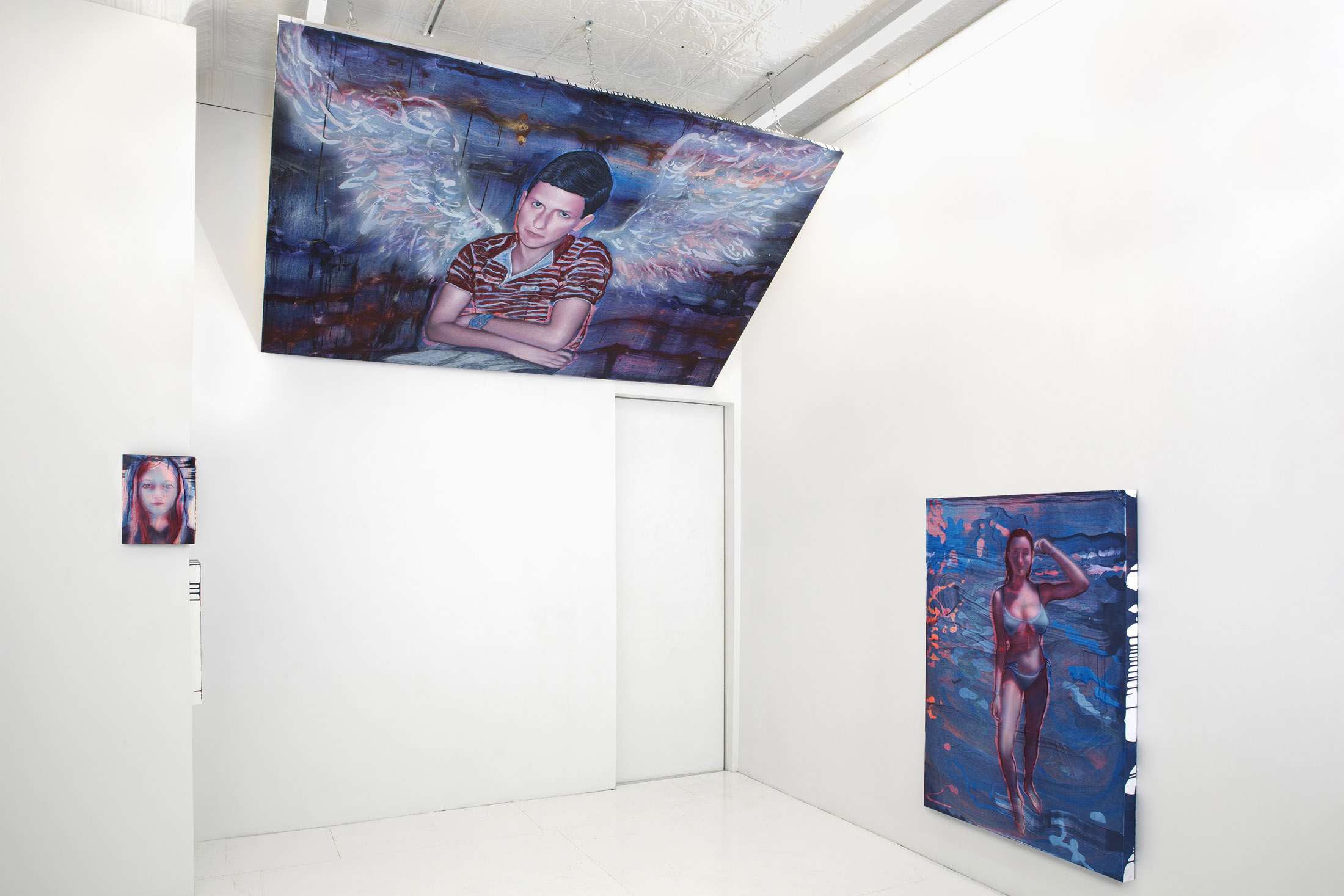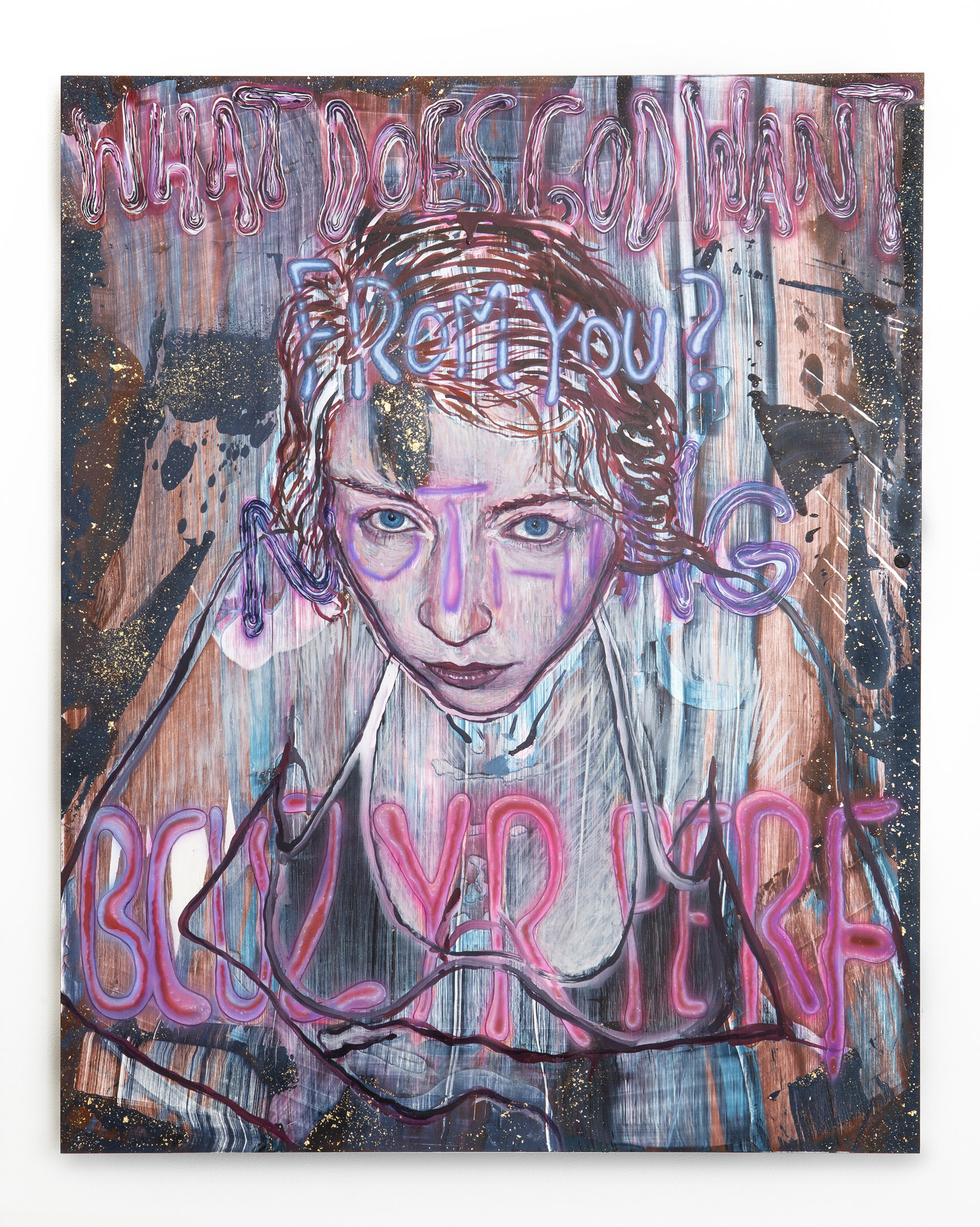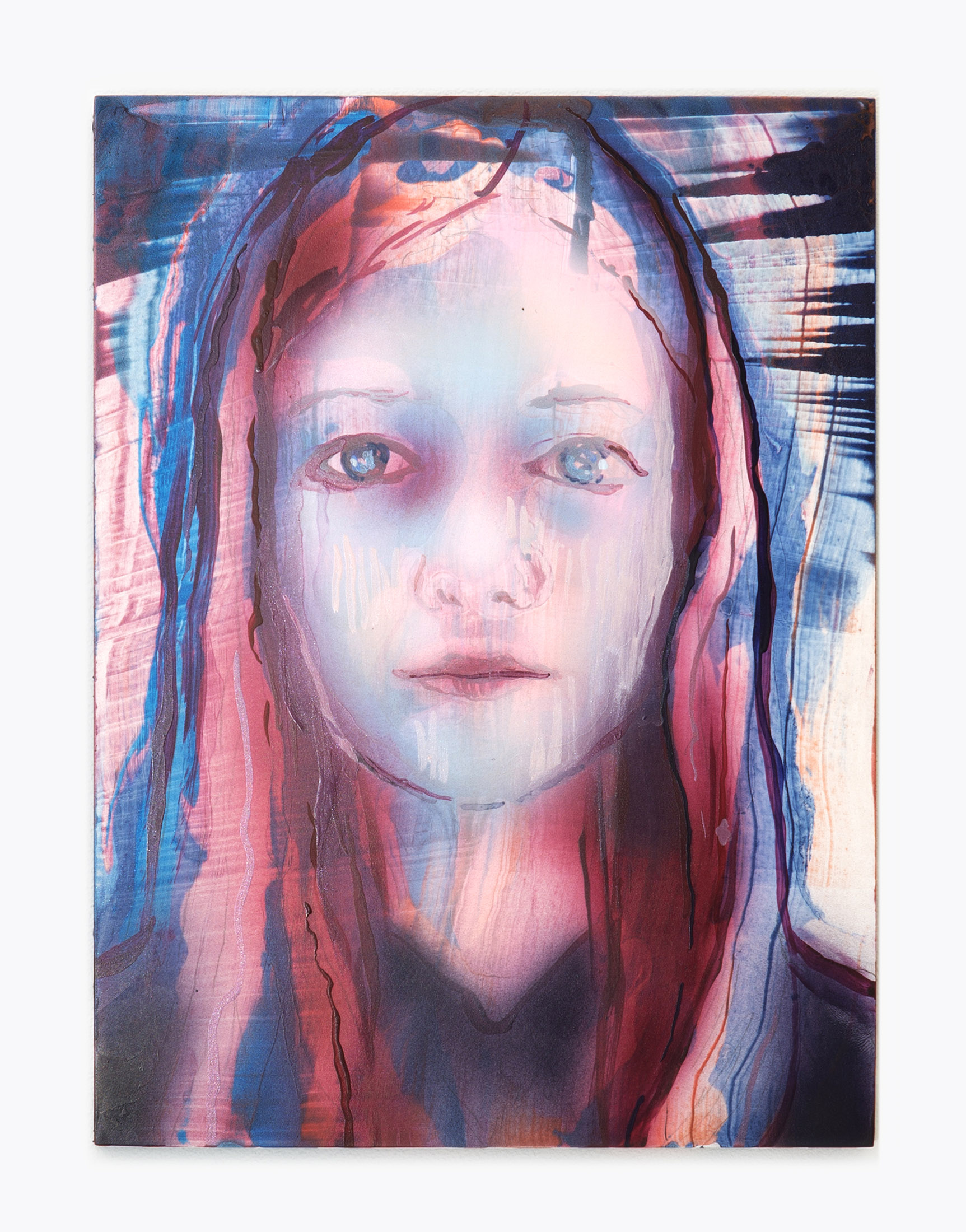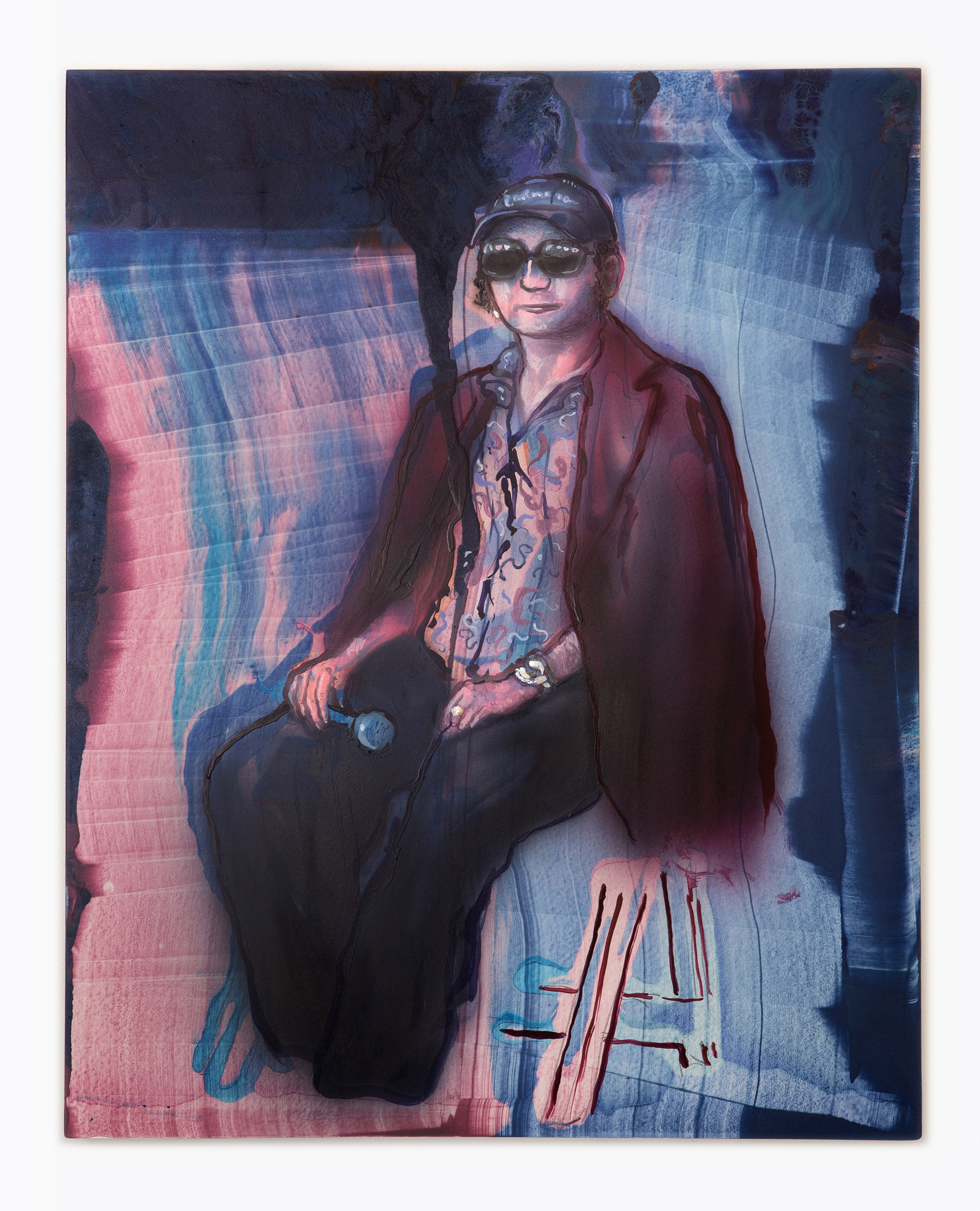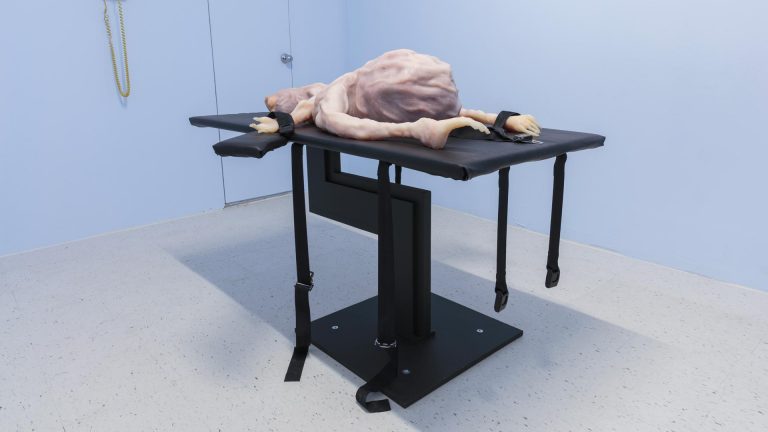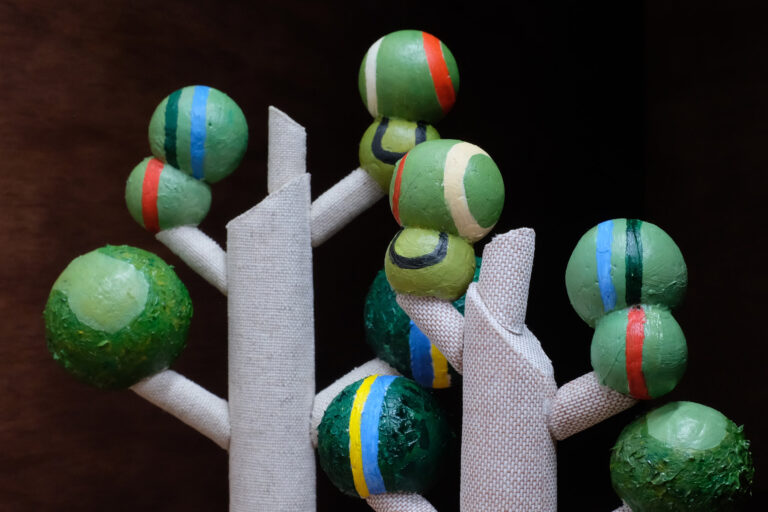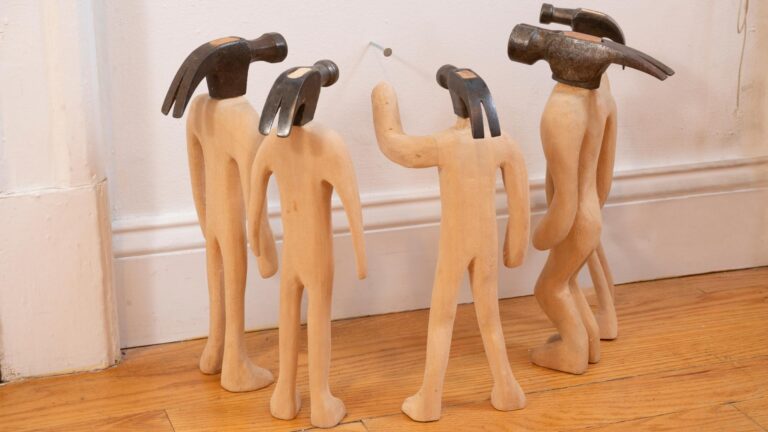Artist: Sven Loven
Exhibition title: Humiliation Ritual
Venue: No Gallery, New York, US
Date: May 18 – June 25, 2023
Photography: all images copyright and courtesy of the artist and No Gallery, New York
“Any functional society, almost any society that has ever existed has had something to do with brilliant, imaginative but extremely impractical people. We don’t know what to do with them anymore; they’re all living in their mother’s basement saying weird things on the internet and you can’t tell which are crazy and which actually have something to contribute. You used to put them in academia but now academia is all self-marketing”
-David Graeber, quoted from the David Graeber vs Peter Thiel Debate, “Where Did the Future Go?” hosted by The Baffler Magazine in 2014.
Prior to the innovations of Louis Daguerre in the mid 19th century, the art of portrait painting was the preeminent way of cap-turing the appearance of a person, functioning not only as an aesthetic object but also as a tool for navigating the social and political structures of the time. The advent of analog photography released portraiture from the burden of realism, allowing it to be recast within every cycle of modernist transgression, with new iterations appearing in each successive movement. Most iconically, the portrait reached its modern apotheosis with Warhol’s pop calling cards, the celebrity face functioning as an embrace and glamorization of mass propaganda. Within art the portrait had abandoned the constraint of reproducing a person’s likeness, replaced instead by a complete infatuation with the sign; the seductive frivolity of mass reproduction and fame superseding mimesis.
Sven Loven’s exhibition “Humiliation Ritual”, explores portrait painting in the current age of digital imagery and memetic dis-course, illuminating significant figures within the sphere of “downtown culture” as it exists in locations geographical, cultural and virtual. “Downtown” here becomes a descriptor of what functions as the pseudo-avant-garde in today’s cultural land-scape. Most of the figures featured in the show are known for contributions to culture beyond the confines of the internet but whose virtual presence serves to turn their image into metonymy of various kinds. Within this framework, a persona is turned into a symbol of a scene, a narrative becomes crafted by an audience, and finally both subject and viewer work in tandem to create a shared framework of variegated meaning. Aesthetics begin to double as markers of nascent ideology, rumors feed into fictions, and fictions turn into documented history of unknown reliability. The act of lore building becomes a practice in self invention and scene creation.
The portrait today is unencumbered by the roles it served in the past, its previous (sociopolitical, economic and cultural) uses mostly defunct and supplanted by other technologies. In attempting to display a new role that the portrait can take in the present day, perhaps we can view the concept of doxxing as giving new life to the genre. The act of doxxing may become an impromptu form of portraiture, where happenstance images become weighted with their proximity to scandal, a throwaway snapshot at times becoming a revelatory embodiment of a (formerly) anonymous figure. An image that previously would have been considered detritus becomes newly galvanized when attached to an accumulation of online history. With this taken into consideration, Loven excavates specific images, many of which are burdened by accrued meaning, in an attempt to reveal underlying essences through an archaeology of the present. The act of exposure is amplified until genuine appearances concealed under masks of mutable identity are unveiled. These portraits capture the intangible essence of a virtual persona, fixed in time for future audiences to interpret and contextualize in novel ways.
Loven’s painting of Siyuan Zhao, the Miami Art Basel stabber, is an iconic depiction of an incidental mugshot that took on a life of its own after circulating online and going on to become the face of a virtual egregore. In multiple incarnations, Zhao’s face evolved into a notorious symbol for a peculiar variety of online psychosis; the Miya figure, an anonymous collective Twit-ter account that gained notoriety and traction before being brutally (self-)canceled and disavowed, was a shared identity that embraced disturbing abjection coupled with a ruthless manner of seemingly conceptual trolling.
Relatedly, the briefly ubiquitous Black Dean Kissick meme was an absurd joke riffing on the pervasiveness of Kissick’s role as symbol for the “downtown” cultural scene (1). The image was a crude parody, in some permutations simply a sloppy solar-ization, in others a more racialized caricature. In Loven’s painted version, the image as shadow figure is emphasized, Kissick appearing as an ethereal Palpatine-like presence, referencing Jung’s alchemical conception of Nigredo, an embrace of the negative self.
According to Jung, “…the nigredo not only brought decay, suffering, death, and the torments of hell visibly before the eyes of the alchemist, it also cast the shadow of melancholy over his solitary soul. In the blackness of his despair he experienced.. grotesque images which reflect the conflict of opposites into which the researcher’s curiosity had led him. His work began with a katabasis, a journey to the underworld as Dante also experienced it.” (2)
Other figures in the show include the gallerist Emily Sundblad overlaid with a transcendent message of self-help, the young writer Sierra Armor sporting filtered tears, various figures connected to virtual narratives strewn across the globe, and a large painting of the venture capitalist Peter Thiel as a flirtatious angel. Taken from an offhand photo of what appears to be Theil’s college days, the lackadaisical smirk the subject wears plays upon his elusive identity and often-rumored influence on reac-tionary trends in culture.
Within the multitudinous labyrinth of internet lore, online happenings and memetic communication that are constructed through shared communities, “portraits” of these figures have taken on meaning far removed from their original manifesta – tion. Loven’s paintings tap into this accumulation of meaning and contemporary mythologizing, reigniting the relevance of the portrait as a cultural tool that bridges divides between the material and virtual worlds. In a sense, each image can be seen as a shibboleth particular to a specific subculture, or a marker of an imagined “scene.” Given that in the present day a scene may exist only in conceptual spaces, an image can at times become the sole concrete framework upon which a narrative is recognizably hung, as opposed to a specific geographic location, style of dress, genre of music, etc. Whether or not the ref-erence or story residing around each image is known to the viewer depends on their proximity to the imagined, collaborative space from which it derives. For some, the figure of Siyuan Zhao is simply a mugshot of a criminal; for others, it is a symbol of a shared mass psychosis. What is fascinating about these figures is that no matter how obscure or esoteric their refer-ence, an audience of global parameters will have participatory access to these group narratives. Furthermore, it is Loven’s goal to tap into the delusional nature of this type of contemporary creative life; to confront images that possess disturbing meanings, to relish in the absurdity of others and to concretize the beauty in the forsaken nature of them all.
Humiliation Ritual will be Loven’s second solo with No Gallery.
[1] https://www.spikeartmagazine.com/?q=articles/dean-kissick-downward-spiral-persona-2
[2] Carl Jung, Collected Works, vol.14:93
Sven Loven (b. Stockholm, Sweden) is an American artist living and working in Brooklyn, NY. He received his BFA from The Cooper Union for The Advancement of Science and Art. His work has been exhibited nationally and internationally including solo presentations with No Gallery (New York, USA), Jan Kaps (Cologne, DE) and Christian Andersen (Copenhagen, DK).
No Gallery is an ambiguously commercial gallery space established in 2019, located in the lowest of the Lower East Side, Manhattan. Founded with the intention of curating exhibitions capable of pushing the boundaries of contem-porary programming, No presents works dedicated to a nuanced exploration of extant social, personal and cultural paradigms.
Sven Loven, Angel Twink Peter Thiel, 2023, acrylic on canvas stretched ove r wood panel 57 x88 x2 in., 144.78 x223.52 x5.08 cm
Sven Loven, Lore, 2022-2023, acrylic on wood panel 30 x24 x2 in., 76.20 x 60.96 x5.08 cm
Sven Loven, Black Dean Kissick, 2022-2023, acrylic and silver leaf on wood panel 30 x24 x2 in., 76.20 x 60.96 x5.08 cm
Sven Loven, EmilySundblad, poolside, channelling a transcendent power, 2022-2023 acrylic and gold leaf on wood panel, 30 x 24x 2 in., 76.20 x 60.96 x5.08 cm
Sven Loven, Bennington E-Girl (Sierra), 2023, acrylic and mica on wood panel 20 x16 x 11/2in., 50.80 x 40.64 x3.81 cm
Sven Loven, Bliccyat the Beach, 2023 acrylic on panel, 48 x36 x2 in., 121.92 x91.44 x5.08 cm
Sven Loven, Tashroxx, 22 and slightly less corrupted, 2023, acrylic on panel, 12 x9 xl in., 30.48 x 22.86 x2.54 cm
Sven Loven, Charlie, 2023, acrylic on panel, 20 x16 x 11/2 in., 50.80 x 40.64 x3.81 cm






